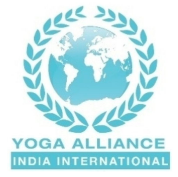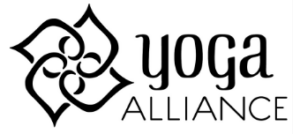
27 Mar Show me your distinctiveness and I will tell your strength
Sometimes, when a client asks us to register a trademark, the sign to be registered, though attractive in marketing terms, is weak in terms of distinctiveness.
The lack of distinctiveness of these marks is mainly because they are descriptive of the quality, quantity, characteristics, intended purpose, type or size of the goods or services they are intended to protect. A distinction must be made between purely descriptive marks (which are not registrable on absolute grounds) and weak marks. For example, a purely descriptive mark would be “squeezed apples” for apple juice and a weak mark would be “apple elixir” for the same product.
Terms or expressions that refer to the characteristics of goods and services are not appropriable by a single person or undertaking and must be available to competitors. Trademarks consisting only of such descriptive terms or expressions are therefore often rejected by registration offices.
In order to obtain registration of such marks, descriptive terms or expressions must be accompanied by additional words or graphic elements unrelated to the goods and services covered, which will give the mark a certain degree of distinctiveness.
However, even if they are granted, these trademarks are hardly opposable against the registration and use of third-party’s trademarks when they coincide or are similar in the weak or non-appropriable elements. This has been the case in the recent judgment of the General Court of the European Union of 18 January 2023, in case T-443/21, YOGA ALLIANCE INDIA INTERNATIONAL, which we analyse here.
On 16 April 2018, Swami Vidyanand, a national of India, filed with the International Bureau of the World Intellectual Property Organization (WIPO) an international registration designating the European Union “YOGA ALLIANCE INDIA INTERNATIONAL” figurative, for services of education, training, coaching and sporting and cultural activities, according to the reproduction below:

This application for international registration received three oppositions, one of them by the US company YAplus d/b/a Yoga Alliance on the grounds of likelihood of confusion with the earlier European Union trademark “YOGA ALLIANCE” figurative, also for yoga education and training services, educational services and other related services, reproduced below:

On 2 April 2020, the Opposition Division of the European Union Intellectual Property Office (EUIPO) upheld the opposition alleging identity and similarity between the services, as well as similarity between the compared signs. The Opposition Division considered that the distinctive character of the opposing mark was normal despite the presence of the word element “YOGA”, which directly refers to the services provided under the opposing mark.
Subsequently, the proprietor of the contested mark filed an appeal before the Board of Appeal of the EUIPO, which, in its decision dated 17 May 2021, annulled the decision of the Opposition Division on the grounds that “YOGA ALLIANCE” to designate services related to the practice of yoga enjoys a low level of distinctiveness. In this case, the Board of Appeal considered that, not only does “YOGA” have a low level of distinctiveness, but also “ALLIANCE” refers to an association formed between entities for a mutual benefit or common purpose. Thus, the distinctiveness of “ALLIANCE” is also low as it does not convey specific information about the commercial origin of the service provider.
The decision of the Board of Appeal of EUIPO was appealed before the General Court of the European Union by the opposing party.
The General Court, in its judgment of 18 January 2023, argues that yoga users are generally open-minded and “internationally oriented” people, and are therefore very likely to know the meaning of the word “yoga”, which is a worldwide phenomenon of great popularity. On the other hand, the Court argues that the word “ALLIANCE” is a term commonly used in the European Union, so whether or not there is an equivalence in a particular European language, it will be understood by the average consumer in the European Union.
The judgment considers that the European Union public will understand the meaning of the words “YOGA” and “ALLIANCE”, both with a little or no distinctive character in the context of the marks at stake.
As regards the device element that conforms the earlier mark, it consists of a lotus flower shape that dominates the sign along with the verbal elements. The General Court upholds the Board of Appeal’s decision that, as the lotus flower is a well-known symbol in the yoga sector, it has a certain allusive character of the protected services.
In relation to the mark applied for, the General Court also upholds the findings of the Board of Appeal that the matching elements ‘YOGA ALLIANCE’ are descriptive. The rest of the elements of the applied for mark, according to the judgment, also have a weak distinctive character. In this regard, the judgment considers that the depicted globe merely reinforces the concept of an “international” word element at the bottom of the mark, that the laurel crown is a typical decorative element representing triumph or success, and that the word “INDIA” simply refers to the geographical location in which the service provider is established.
The judgment concludes that, although the signs are phonetically and conceptually similar, these similarities are based on word elements weak or devoid of distinctive character, so the visual or graphic differences have a greater impact on the assessment of the likelihood of confusion. Therefore, the General Court, in assessing the signs as a whole, considers that there is no likelihood of confusion between the marks, despite the fact that the services are similar and identical.
However, we are wondering what the judgment would have been if the opposing mark had consisted only of the word element “YOGA ALLIANCE”.
It must be considered that there are trademarks registered before the EUIPO with the element “ALLIANCE” and without any additional figurative element, such as “THE COMPETENCY ALLIANCE”, “WE CARE ALLIANCE”, “CHAIN OF ALLIANCE”, “GLOBAL INTELLECTUAL PROPERTY ALLIANCE”, “DEVELPOMENT AND CLIMATE ALLIANCE” or even “ALLIANCE” with no other element for services for the provision of medical and scientific research information.
However, we note that the aforementioned judgment is not always in line with the criterion of the General Court, since in its recent judgment of 1 March 2023 (in case T-25/22, HE&ME) it found that there was a likelihood of confusion between the applied for mark ![]() to distinguish clothing and the earlier word mark “ME”, registered in the Benelux also for clothing.
to distinguish clothing and the earlier word mark “ME”, registered in the Benelux also for clothing.
In this case, the Court considered that “HE” is descriptive of the goods, since it identifies the public for which the goods are intended, namely the male public. Whereas the coinciding element “ME” refers to the person who buys the goods, therefore, it cannot be considered merely descriptive of the goods in question.
All in all, and not without raising certain doubts, the Court considers that there is a likelihood of confusion between “HE&ME” and “ME”, as the opposing mark “ME” is fully included in the applied for mark and the goods are similar.
The latter case suggests that, if the opposing mark “YOGA ALLIANCE” had been a word mark, without any figurative element, it is possible that the Court would have held that there was a likelihood of confusion with the figurative mark “YOGA ALLIANCE INDIA INTERNATIONAL”. However, each case must be assessed on its own merits.
In short, the general conclusion is that the more fanciful a mark is, and the further it is removed from any allusion to the characteristics of the protected goods and services, the greater the protection granted and the more efficient its obstructive function will be, in order to prevent the registration or use of similar marks.
Author: Mercè Hernández, Lawyer.



